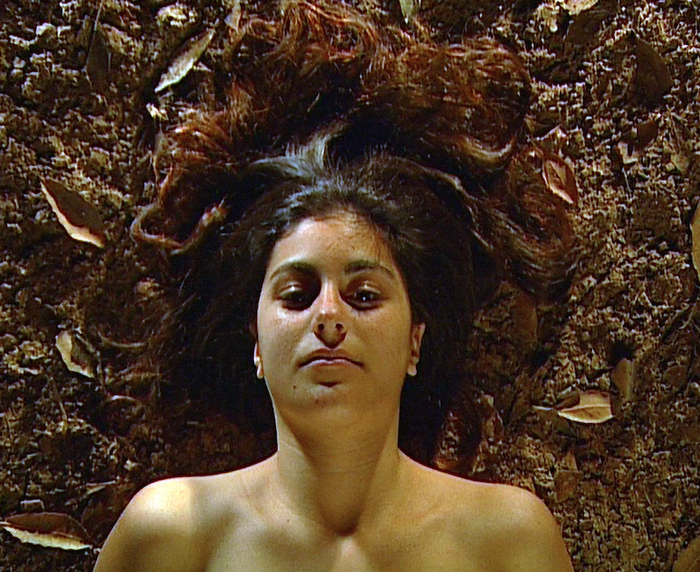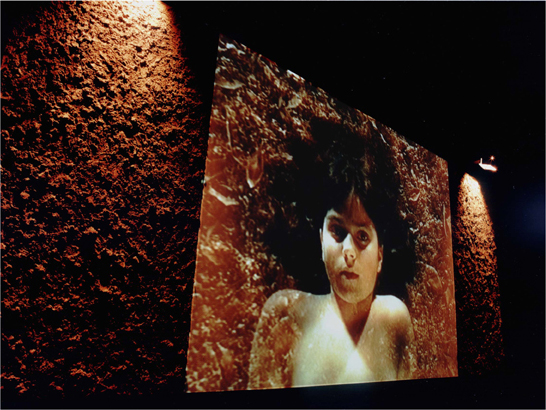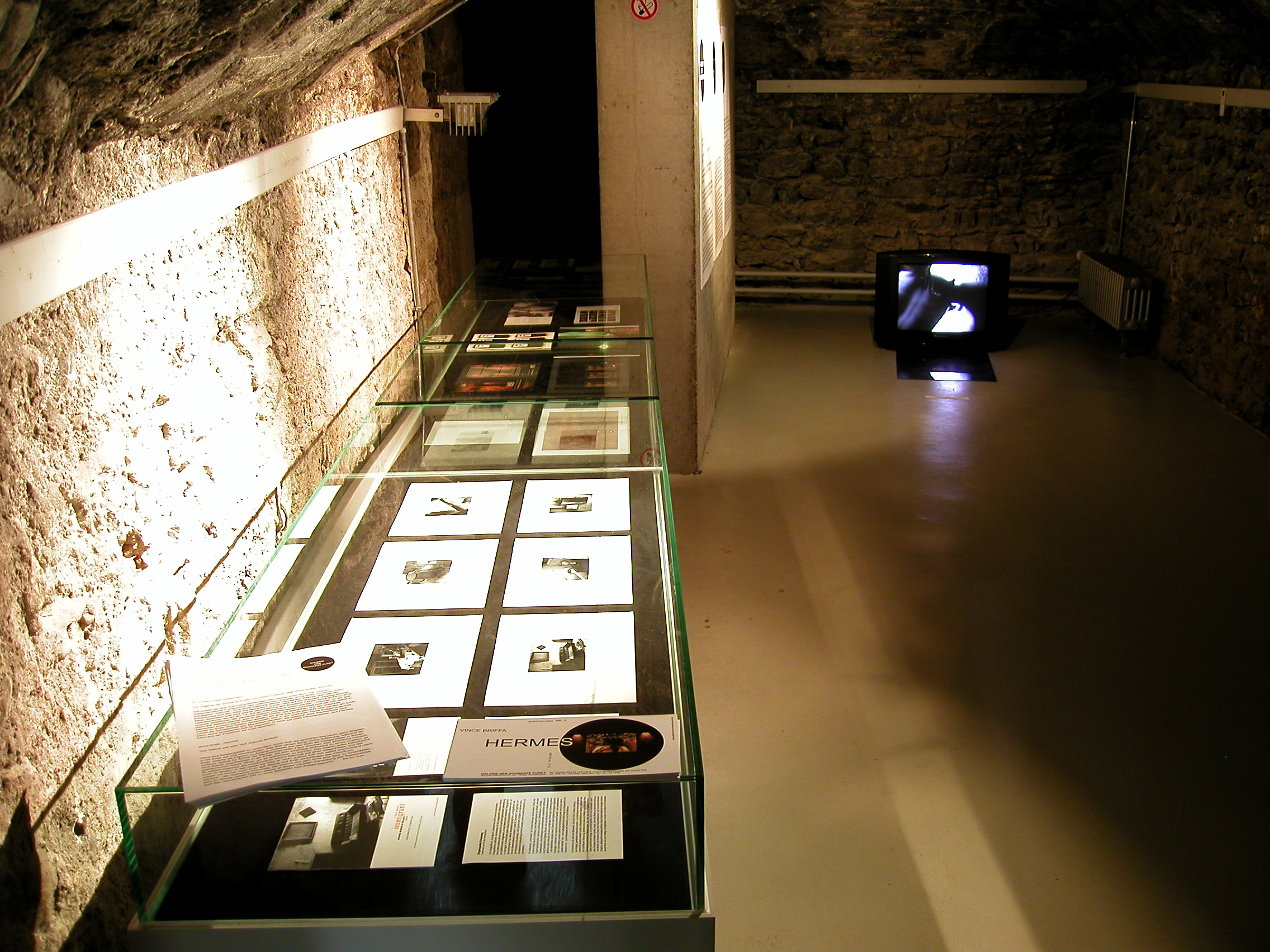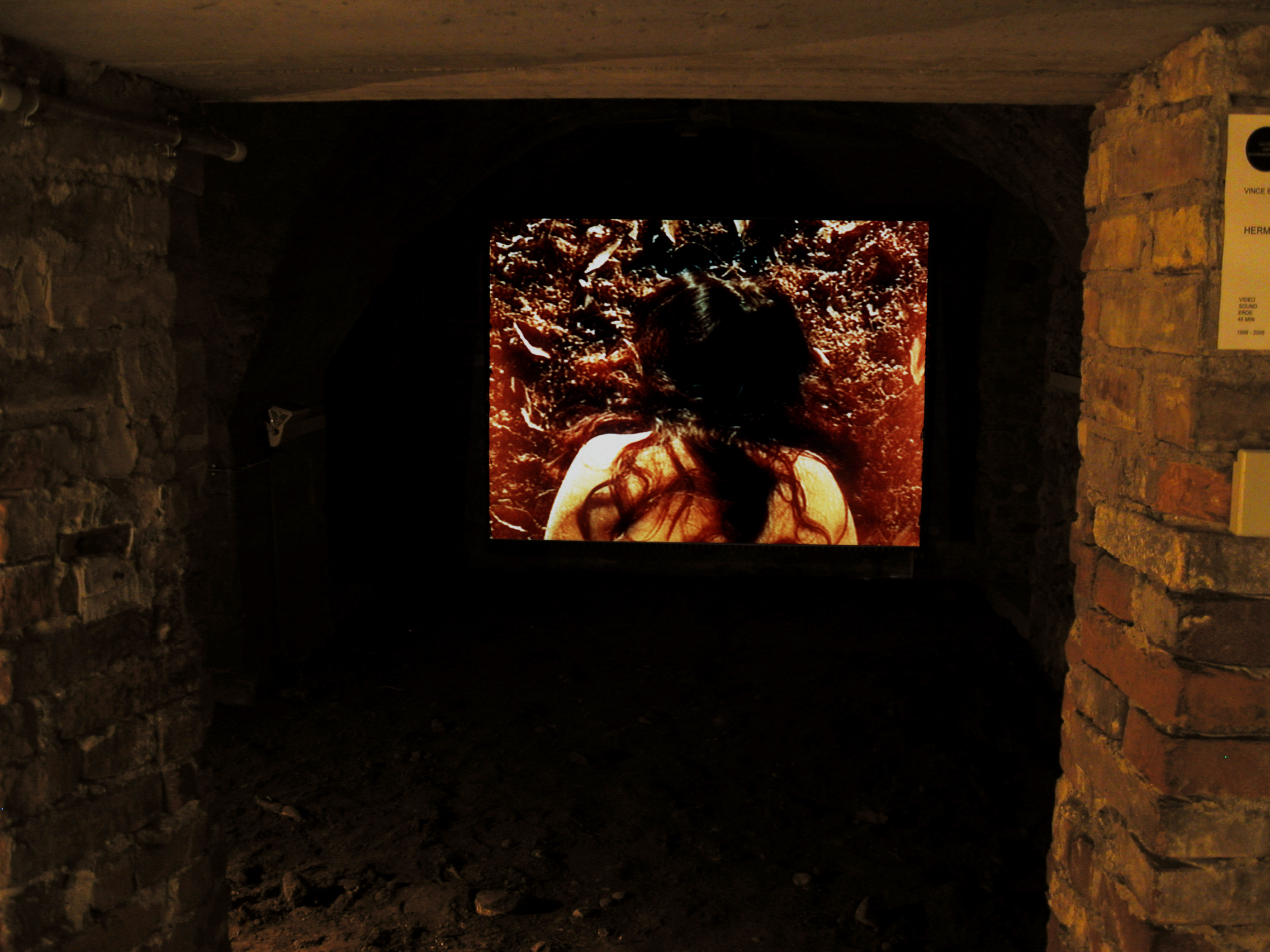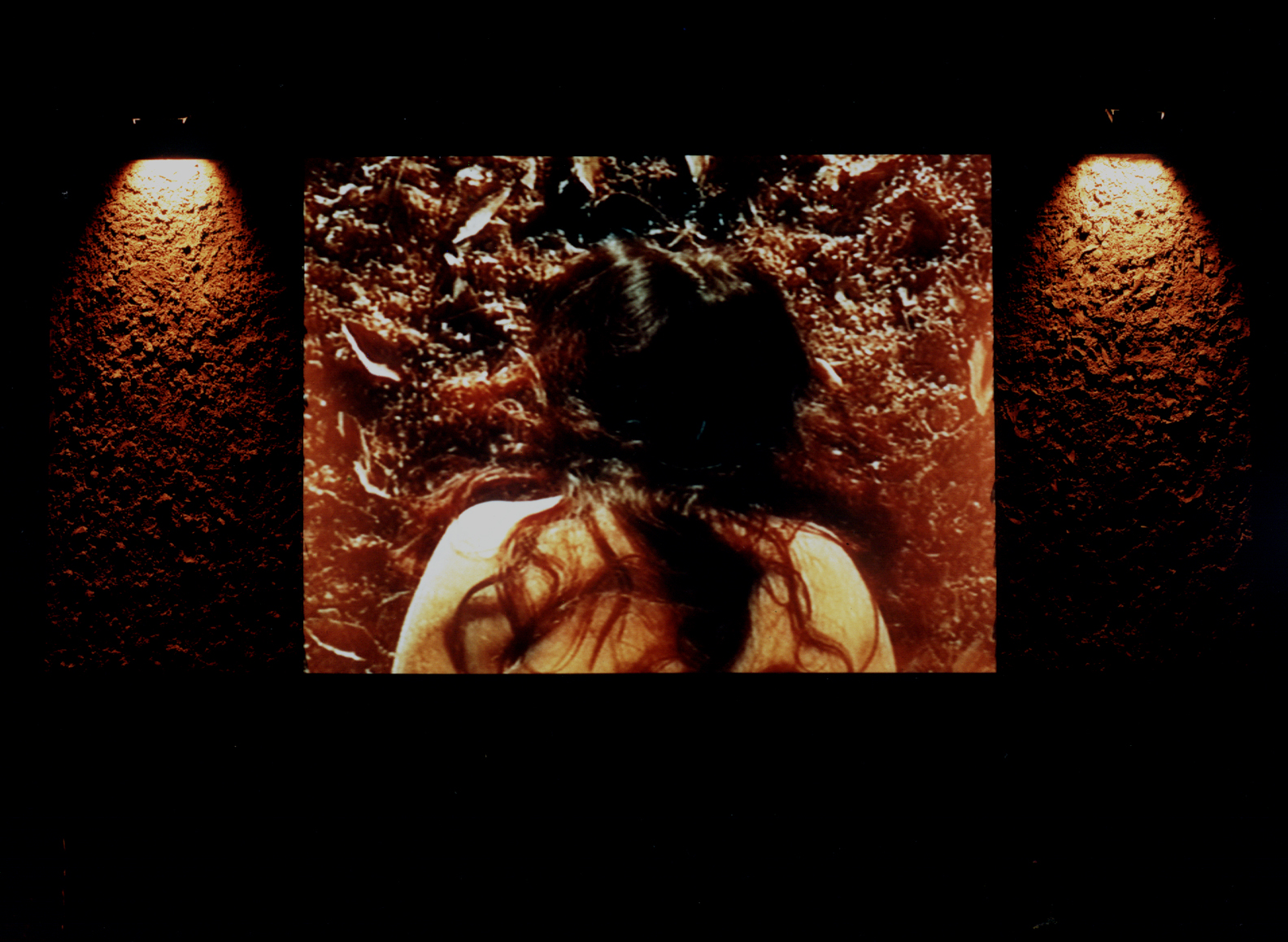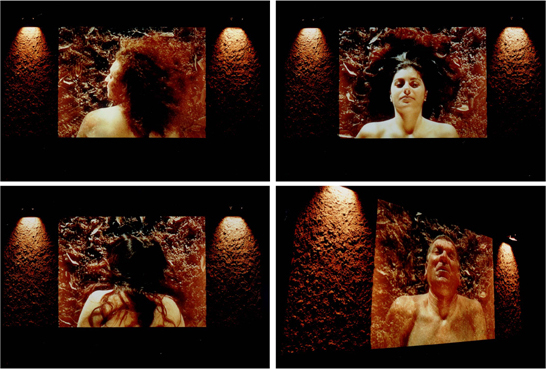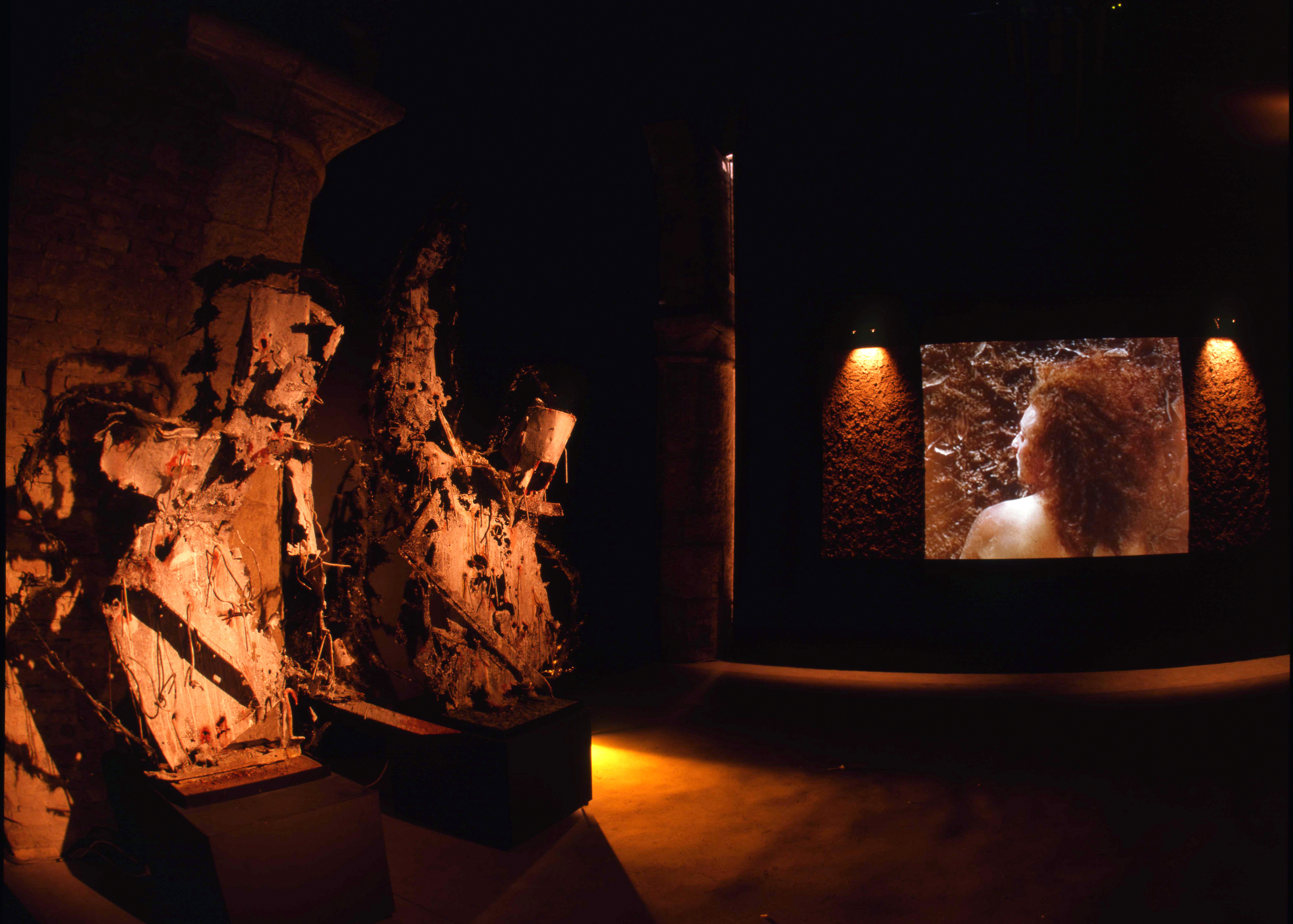Hermes
The primary concern for Vince Briffa is biological time and its effects on human beings. More than in the Greek myth of the underworld, I feel that Hermes bears a stronger connection to the Biblical narration from Genesis wherein it is stated that man is created from the soil to which he is eventually destined to return. Soil becomes thus the symbol of man's nemesis, and in many ways provides him with an enduring psychological trauma. Presented in a Caravaggist chiaroscuro play, Briffa's video collage must be understood as a representation of the dominionistic qualities of nature. Its continuous threats produce in man fear and alienation, changing him into a powerless being unable to respond to its might. The passing of time enhances the silent agony of the trapped person, and in contrast with the general knowledge on the meaning of light as a metaphor of life and the mystic, light is now purposely directed to illuminate the scentless, barren earth. Light marks the end of biological time in an exaltation of death and in its failure to attain transcendence.
[1]
Without changing their bodily posture, the solitary individuals in Briffa’s video gradually start to fade into the earth. The image loses its previous definition while the earth, which formerly surrounded the figures like the gold which frames saintly figures in icons, slowly invades the space of each figure (it is also interesting to note that the earth changes very little in comparison with the human figures). The ethereal, human image evanesces into the earth, which seems to heave inwards to open a concave, tomb-like space to receive it. The presence of each individual is temporary, like the aura of warm breath on a pane of glass, and the hollow in the ground where he or she disappears hurriedly replenishes itself with more earth. Stones and soil engulf the individual. Hermes - this mythical traveller who comes and goes without leaving a trace - becomes herma, a pile of stones. In this visual exposition of the death instinct, the destination (inanimate matter) is a return to the point of departure: “…until you return to the ground; for from it you were taken, Dust you are, to dust you shall return”.
- Eyeing Absence: the Journey of an Impossible Dream - Raphael Vella, 2001[2]
Exhibition Pictures
{{#if:HermesE.jpgHermesB.jpgHermesC.jpg|
{{#if:|
{{{header}}}
}}{{#if:HermesE.jpg|
}}{{#if:HermesB.jpg|
}}{{#if:HermesC.jpg|
}}{{#if:|
}}
}}{{#if:|
}}
}}{{#if:|
}}
}}{{#if:|
}}
}}{{#if:|
}}
}}{{#if:|
}}
}}{{#if:|
}}
}}{{#if:|
}}
}}
{{#if:HermesD.jpgHermesF.jpgHermesA.jpg|
{{#if:|
{{{header}}}
}}{{#if:HermesD.jpg|
}}{{#if:HermesF.jpg|
}}{{#if:HermesA.jpg|
}}{{#if:|
}}
}}{{#if:|
}}
}}{{#if:|
}}
}}{{#if:|
}}
}}{{#if:|
}}
}}{{#if:|
}}
}}{{#if:|
}}
}}{{#if:|
}}
}}
External Links
| references-column-width | references-column-count references-column-count-{{{1}}} }} | {{#if: | references-column-width }} }}" style="{{#if: | {{#iferror: {{#ifexpr: 1 > 1 }} | Template:Column-width | column-count: {{{1}}}; -moz-column-count: {{{1}}}; -webkit-column-count: {{{1}}}; }} | {{#if: | Template:Column-width }} }}">
- ↑ http://www.vincebriffa.com/hermes/ Excerpt from the Maltese Pavilion write-up, Venice Biennale catalogue by Adrian Bartolo, Commissioner of the Malta Pavilion
- ↑ http://www.vincebriffa.com/hermes/
